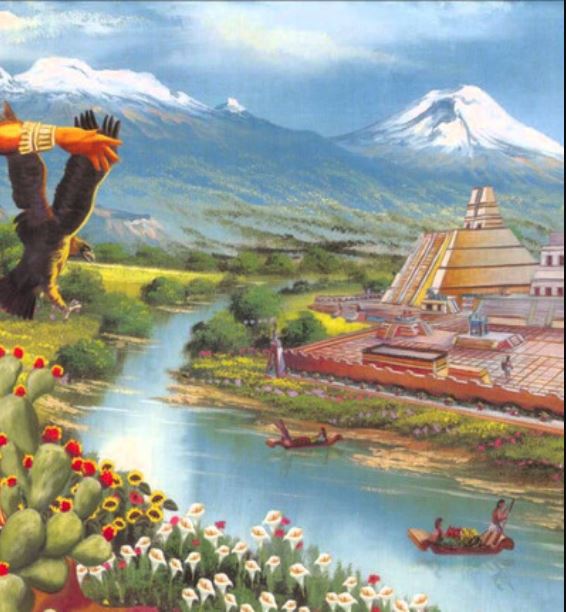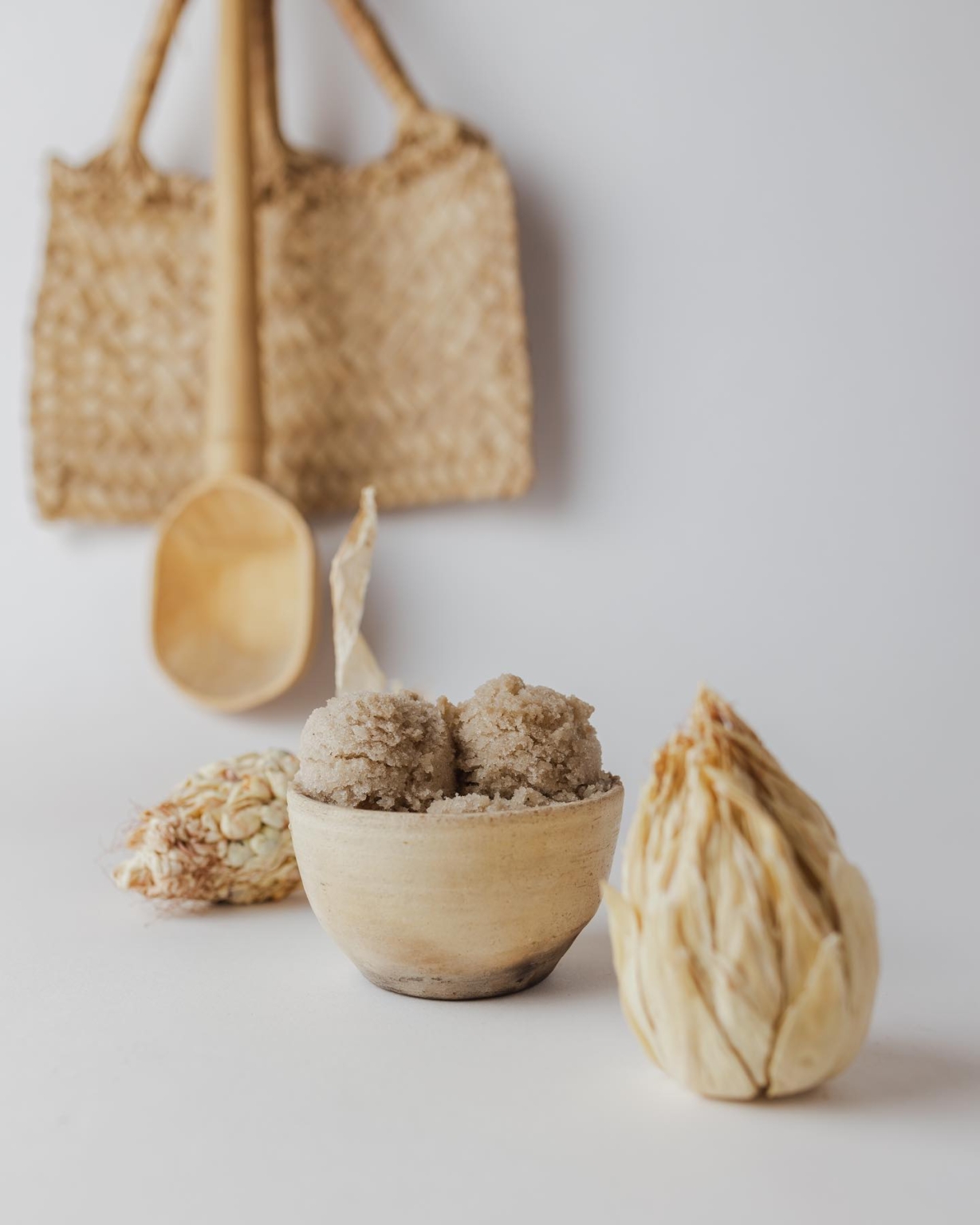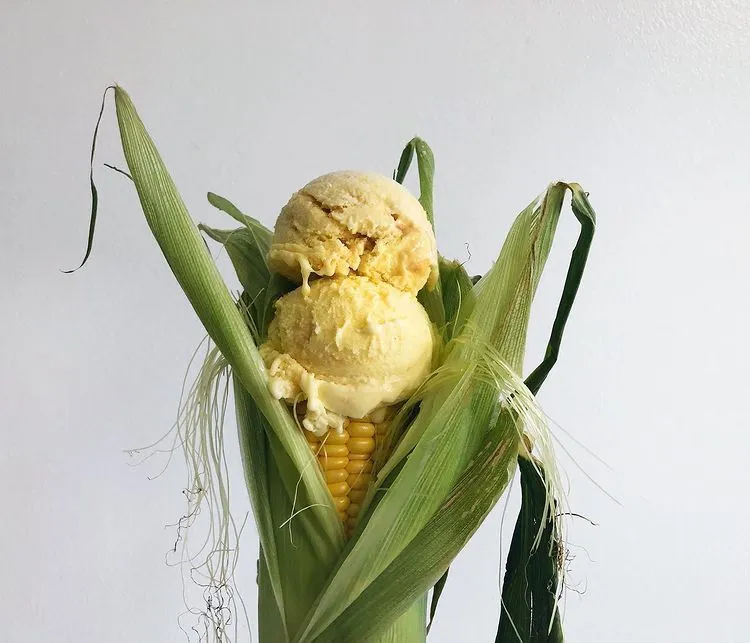
The origin of snow in Mexico dates back to pre-Hispanic times.
In pre-Hispanic times, King Moctezuma ate snow brought from the Popocatépetl volcano, sweetened with honey from bees or wasps and honey water, which is why the Aztec Mexicas were the first civilization in America of which there is pre-Hispanic record to choose this dessert in their diet.
It was only available to priests and rulers, as it was very expensive, costing up to 20 cacao seeds. It was one of the delicacies included in the Teotihuacan religious ceremonies to ask their gods for “a good year of harvest” and they did so on the day of the equinox.

Some historians mention that the Mexicas used special runners, called tamemes, who held the load on their backs, to transport and protect the snow. They used skin bags covered with ixtle fibers to prevent it from melting. They brought it down from the Popocatépetl and Iztaccíhuatl volcanoes. On their return, they used to stop in Santiago Tulyehualco (in Nahuatl, "place around the tules", in Xochimilco).

Upon arriving at Teotihuacán, they carefully crushed the ice, adding natural honey from tuna, maguey, wasps and corn, as well as various fruits, as well as cocoa and capullin. They made this mixture in a wooden bucket, with a shovel and a lot of strength! They turned it over and over, thus achieving the solid state and proper texture.
They filled clay vessels on wooden boxes with beds of ice and salt to transport it by canoe to Tlatelolco, where the main Mexica market was located. The rulers, noble warriors and maidens came to get the snow and various products there, including the strangest and most exotic ones.
Ver más historia en https://www.eluniversal.com.mx/mochilazo-en-el-tiempo/un-oficio-que-nacio-en-los-volcanes/
Some data
- It is said that Moctezuma II, emperor of the Aztecs, who considered snow a delicacy and a privilege, brought to the Spanish table the snow that his servants made and brought from the volcanoes.
Fray Martín de Valencia, an evangelizer who arrived during the Conquest, introduced the incorporation of milk (now called raw milk) in the preparation of snow and established the Snow Fair in Santiago Tulyehualco in 1529. Nowadays, in addition to offering snow, dances, town theater and countless musical groups are held there. It is a healthy diversion. Many families have preserved this custom through many generations, achieving international attention.
- In the 1660s, Francesco Procopio del Coltelli popularized the sale of frozen fruit juices on the streets of Paris; and in 1672, after perfecting a machine to produce gelato (his invention) in large quantities, he opened the Café Procope, an establishment that is still open today. With this machine, a mixture of ice and salt was used for the first time to further lower the temperature of the ice. This procedure is the same one that is still used to make ice cream in jugs.
During the colonial era, the Italians introduced the jug to make their ice cream, which is why it is still called “ice in jugs”.
- It is said that the Chinese, in the same way, mixed snow from the mountains with fruit and honey.
- The Caliphs of Baghdad made it with fruit juice, they called it sharbets, which means “drink” and is where the word “sorbet” comes from.
- In 1295, Marco Polo introduced to Italy the ice cream recipes he had learned during his travels.
Summer is the ideal time to taste them - a refreshing experience!
Snow with water or milk is a 100% artisanal method, made entirely by hand, without preservatives, and is made every day. At first, water and various traditional fruits were used, but today, they are also made with milk and extraordinary combinations, they are medicinal, exotic, with mezcal or tequila, with chili, grasshoppers, corn, avocado, moles, fruits and cereals and many others, which have achieved acceptance both by nationals and foreigners.
It is worth mentioning that in other places in the Mexican Republic similar celebrations are held for this ancient tradition, among them Oaxaca, Veracruz, Coahuila, Michoacán and Nuevo León, but now with globalization...
Globalization has had a significant impact on the ice cream industry. Let me share some interesting facts about this topic:
-
Ice cream market size:
- In 2024, the Ice Cream market size was estimated to be USD 111.62 Billion. It is expected to reach USD 135.60 Billion by 2029, growing at a CAGR of 3.97% during that period.
- Strong penetration of organised retail channels is driving market growth. Consumers prefer to purchase ice cream from supermarkets and hypermarkets, making the off-trade channel the dominant channel for ice cream sales globally.
- Convenience stores are also an important channel for ice cream sales after supermarkets and hypermarkets.
- Ice cream is commonly consumed as an after-meal snack in restaurants and foodservice channels, further contributing to the growth of the global market.
-
Ice cream market in Mexico:
- In Mexico, the ice cream industry is worth $900 million annually, with an annual growth of 4.5%.
- High quality and flavor trends have driven demand for artisanal and gourmet ice creams.
In short, globalization has allowed ice cream to reach different corners of the world, adapting to local preferences and creating a variety of options for lovers of this delicious dessert.

A delight made into a tradition in Guadalajara
The snow in a jug has nothing to do with what is commonly known as ice cream, the big difference that exists between a common ice cream and a homemade snow is the raw milk.
It is concentrated in a 100 percent artisanal and handmade preparation. The ingredients: raw milk, fruit and sugar, added to the “secret touch of those who make it” or that the Guadalajara companies put in each of their jugs.
Turns and more turns of the jug, immersed in ice and with the liquid product poured into it. Thus, until the hand of the man or artisan begins to create the consistency of ice and thus make the best snow in the city.
The ice cream business, at that time, started with only four flavors...
Today it extends to much more, it is practically infinite, the essential and most successful being vanilla and corn, and to be able to manufacture this amount of flavors...
We have the ideal equipment, whether you want to make sorbet, ice cream, gelato, ice cream or are thinking of offering a specific one, we have the right machine.
Sources
Emijrp y contribs, Wikipedia.org. Nieve (helado). 26 de sep. De 2005, Última edición 23 de marzo de 2020. Consultada el 8 de abril de 2021. Disponible en: https://es.wikipedia.org/wiki/Nieve_(helado)#cite_note-elsiglodetorreon-9
Florencia Durán García, El Siglo de Torreón. Los sabores de La Laguna: El helado. 11 de septiembre de 2015. Consultado el 7 de abril de 2021. Disponible en: https://www.elsiglodetorreon.com.mx/noticia/1151169.los-sabores-de-la-laguna-el-helado.html
CDMX Gob. Mx. Feria Nacional de la Nieve Santiago Tulyehualco. 2016. Consultado el 8 de abril del 2021.Disponible en: https://www.archivo.cdmx.gob.mx/vive-cdmx/post/feria-nacional-de-la-nieve
Adriana Durán Ávila, El Universal, Helado: rico antojo. 30 de abril de 2009, Consultada el 8 de abril de 2021, Disponible en: https://archivo.eluniversal.com.mx/articulos/52877.html
Heriberto G. Contreras Garibay. Revista La Ciencia y el Hombre., V. XXVIII, No. 2, Curiosidades Científicas. UNA helada historia. Mayo-Agosto 2015. Consultada el 8 de abril de 2021. Disponible en: https://www.uv.mx/cienciahombre/revistae/vol28num2/articulos/helada-historica.html
Visita Larousse Cocina: https://laroussecocina.mx/blog/la-historia-del-helado-un-viaje-de-sabores-y-culturas-hasta-mexico/
|








